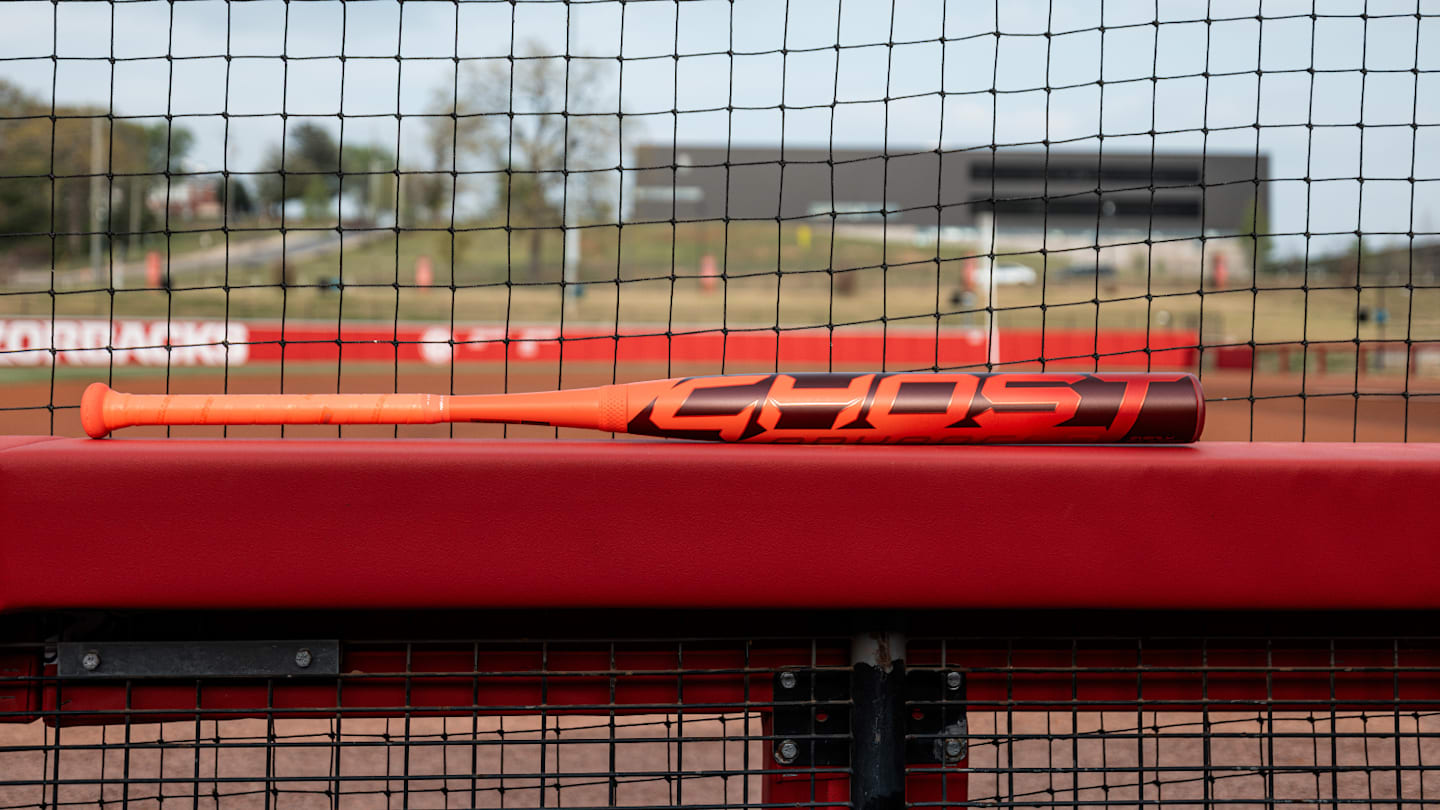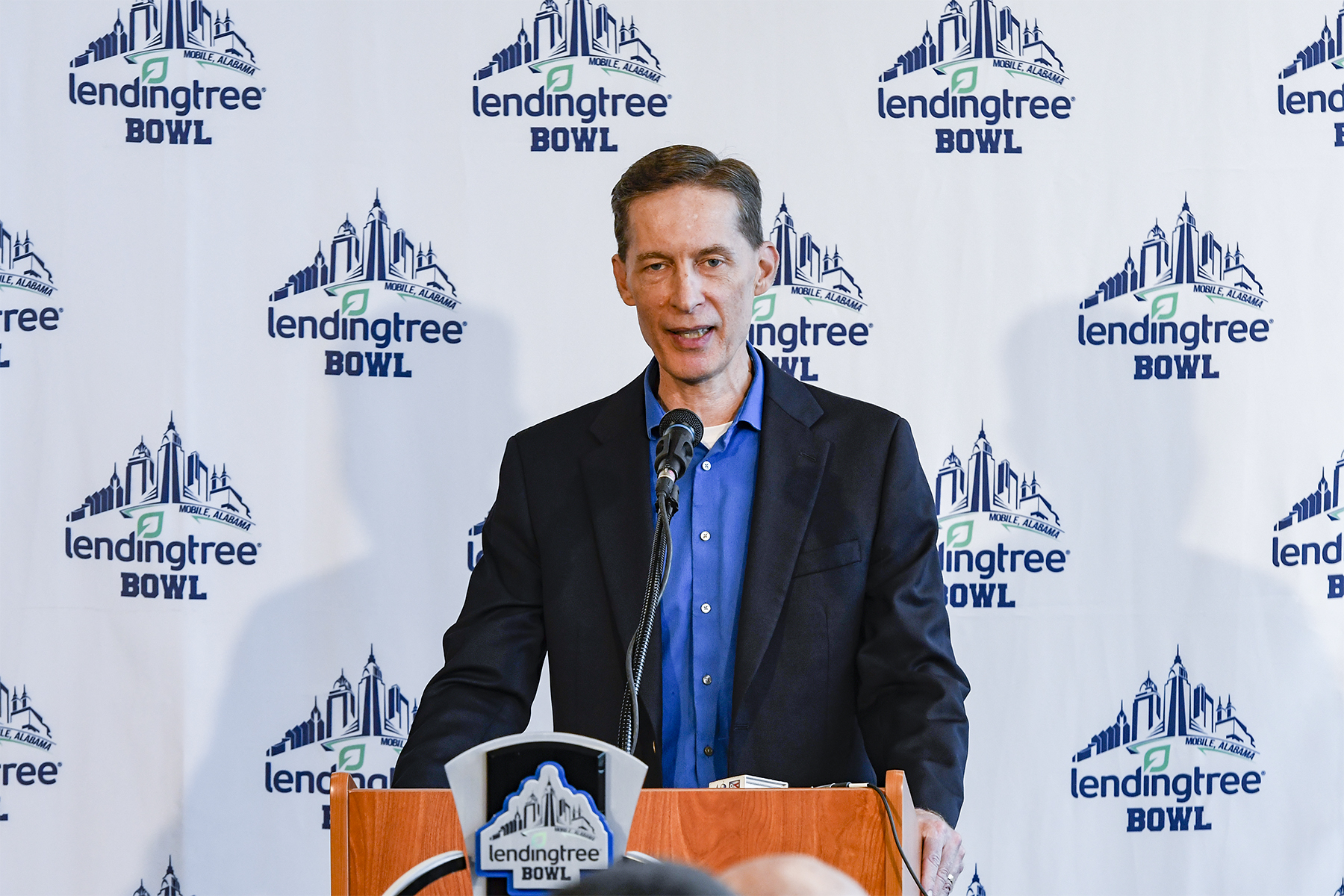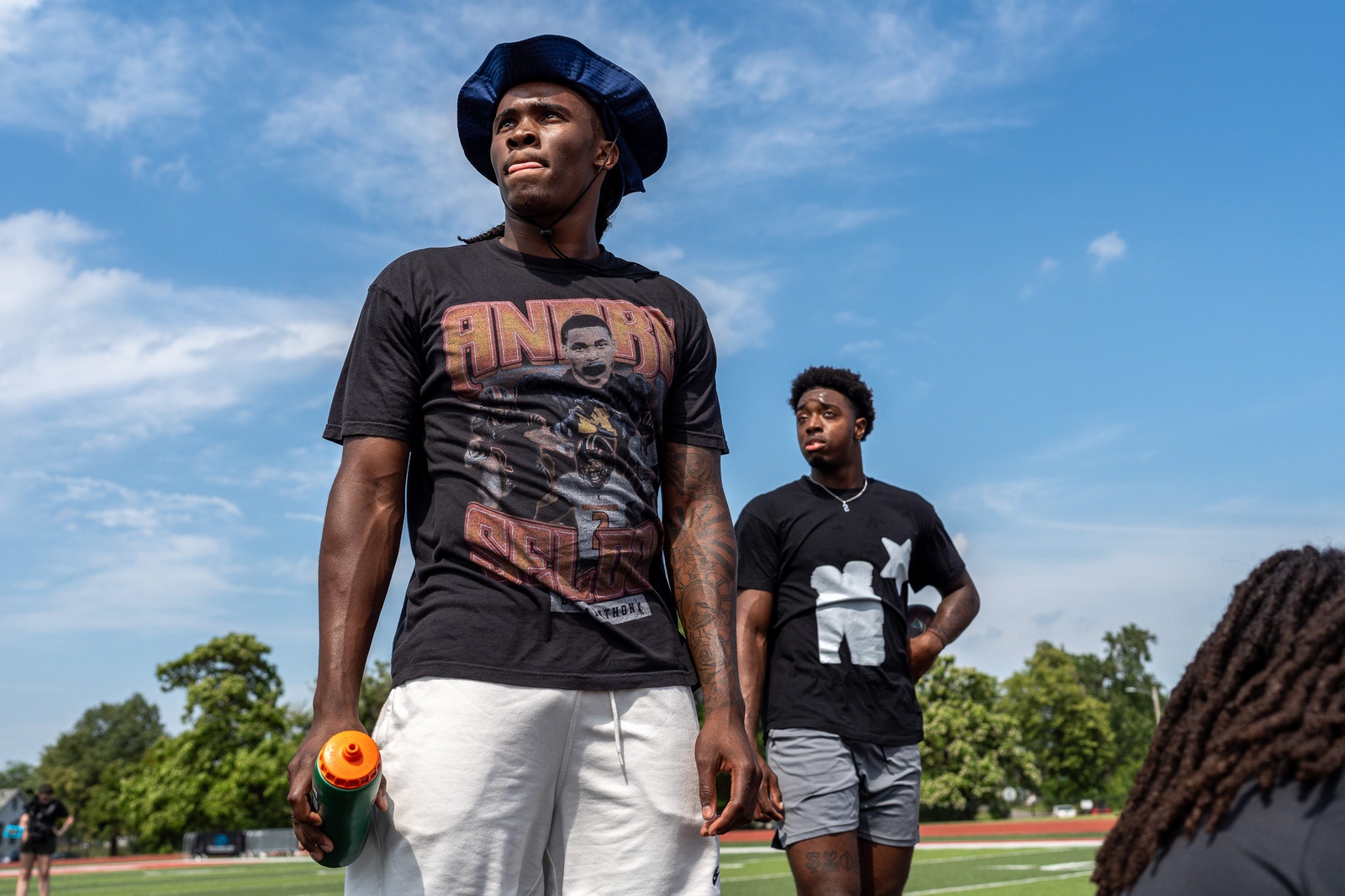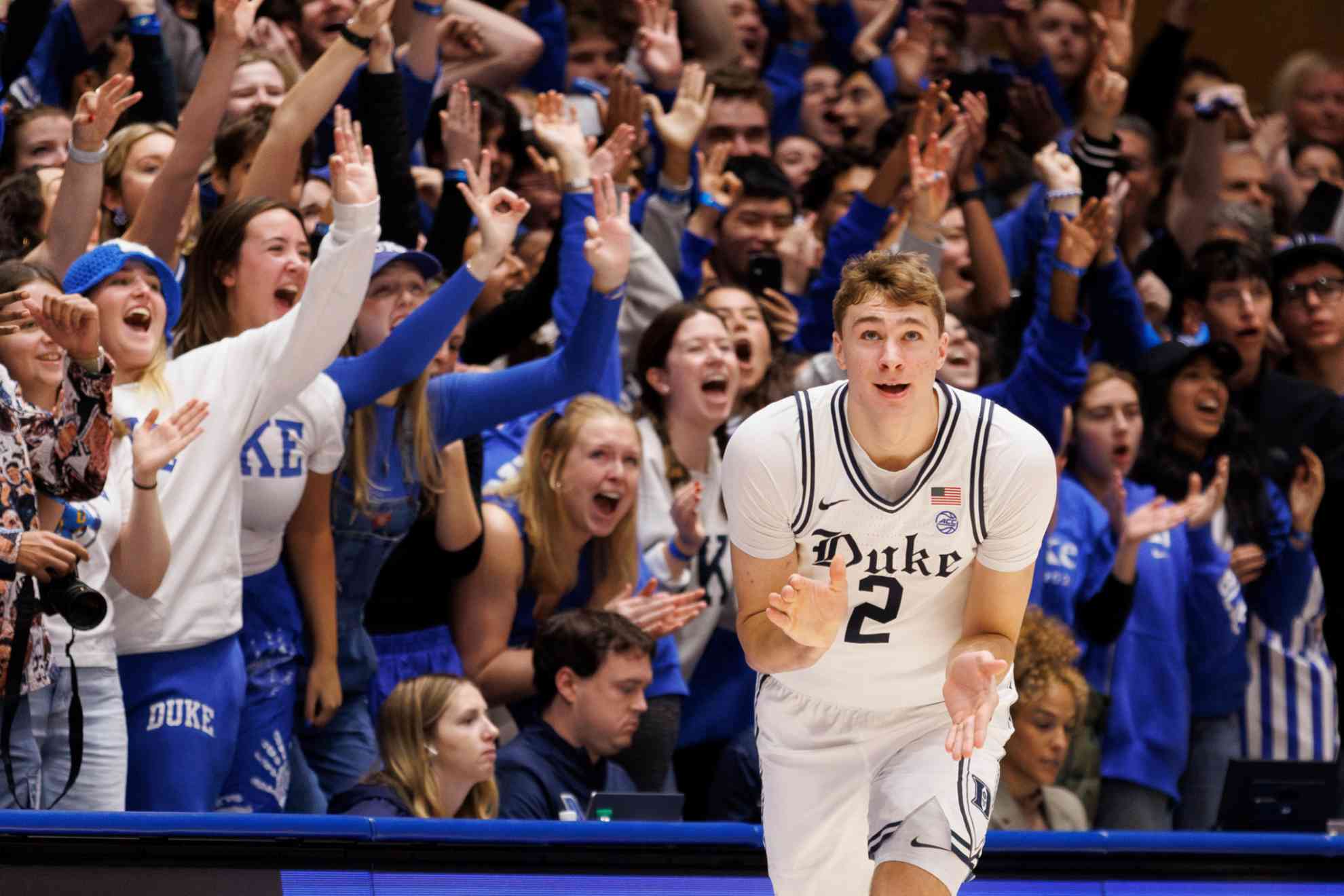NIL
Easton Partners with NIL Stars NiJaree Canady, Bri Ellis for Historic WCWS Bat Launch
Top softball brand Easton has announced they are partnering with two of college softball’s biggest names in Texas Tech’s NiJaree Canady and Arkansas’s Bri Ellis, to feature their new bat launch. On Thursday, Easton announced the launch of its new bat. The Ghost Advance promotes cutting-edge technology that aims to redefine fastpitch performance and features […]

Top softball brand Easton has announced they are partnering with two of college softball’s biggest names in Texas Tech’s NiJaree Canady and Arkansas’s Bri Ellis, to feature their new bat launch.
On Thursday, Easton announced the launch of its new bat. The Ghost Advance promotes cutting-edge technology that aims to redefine fastpitch performance and features a slick red and black design.
The partnerships is historic as it is the first time Easton has announced a bat launch around two top NIL athletes.
Both Canady and Ellis have had breakout seasons for their respective teams. Canady led Texas Tech to their first-ever WCWS. The NFCA Pitcher of the Year is first in the nation in ERA (0.89) and wins (30) while striking out 279 batters.
Ellis proved herself as one of the best hitters in the country. She is third in the nation in home runs with 26 and has a .440 batting average with 68 runs and 72 RBIs. Ellis was named the USA Softball Player of the Year on Wednesday.
“We are extremely proud of the athletes that we have been able to partner with this collegiate season,” said Matt Arndt, Easton SVP of Product & R&D. “The best players in the game swing a Ghost and the brand-new Ghost Advanced is no exception. We wanted to create the highest performing bat possible to match the talents of the players who use them on a daily basis.”
The new bat will be available in all stores starting June 5. To learn more about the Ghost Advance, visit Easton’s website.
More News: NiJaree Canady Leads Texas Tech Softball to First-Ever Women’s College World Series Berth
More News: USA Softball Names Arkansas Star Bri Ellis 2025 Player of the Year
NIL
Q&A with Liberty AD Ian McCaw Part 2: CFP changes, Football, Softball, Baseball
We had the privilege of speaking with Liberty Athletic Director Ian McCaw at length about the state of the Liberty Athletic program. We delved into a vast array of topics, focusing on the athletic program’s second year in Conference USA and the numerous changes within the college athletic landscape. We also touched on several topics […]

We had the privilege of speaking with Liberty Athletic Director Ian McCaw at length about the state of the Liberty Athletic program. We delved into a vast array of topics, focusing on the athletic program’s second year in Conference USA and the numerous changes within the college athletic landscape. We also touched on several topics surrounding Liberty football, men’s and women’s basketball, baseball, softball and other programs on the Mountain.
This will be a multi-part series we release this week. Monday’s feature focused on a recap of the 2024-25 athletic year for the Flames, goals for the athletic department, and the House Settlement, so be sure to check that out if you missed it. Today, we turn our attention to several sports around campus including football, softball, and baseball.
ASOR: There’s been a lot of discussion about changing the format of the College Football Playoff in the coming years, wh ere do you see that landing and what does Liberty need to do to be in that conversation as a potential CFP team in the coming years?
Ian McCaw: “It’s really essential that the Group of Six continue to have access. I really like the 5+11 model. It seems like that is getting a fair amount of traction right now, and that would ensure that the top Group of Five champion, the highest rated Group of Five champion, would have access. That’s really the most important part for us. Then, if we have a season like we did in 2023, it really positions us to be in the College Football Playoff and obviously that is a tremendous accomplishment for any Group of Six program.”
ASOR: The football team was unable to replicate the success from 2023 in 2024, what have you seen from Coach Chadwell and his team that gives you confidence they can get back to the top of the league this fall?
Ian McCaw: “I really like the character and the culture and really the makeup of the 2025 Flames. I’ve had a chance to get out and see some of their workouts, and they seem to be a very humble and hungry group. I think that’s a formula for success. I think they’ll be highly motivated to get back to the 2023 level.”
ASOR: What do you think of the job Coach Chadwell and his staff have done as they continue to navigate the transfer portal?
Ian McCaw: “I think they’ve done a really good job of finding players that fit the culture and also fit the needs of the team. What I’ve been most impressed with, from what I’ve seen thus far, is I think they’ve built a tremendous amount of depth, and that’s very rare at the Group of Five level and in Conference USA. Think that’s going to be a secret sauce for us is that we’re going to be probably the deepest team in Conference USA, and that really pays dividends over the course of the year because injuries occur and things happen. I think we’ve got really quality depth.”
ASOR: Coach Richardson and the softball team made history by taking down #1 Texas A&M and advancing to the Super Regionals, how much exposure did that bring to the program and the athletic department?
Ian McCaw: “Softball has done a great job of marketing itself, and they get great exposure on ESPN. As a result, playing in the final in the A&M regional was the highest rated regional game. And then the Oregon Super Regional I think was the third highest Super Regional from a rating standpoint. So, just great national exposure for the softball program, the department, the entire University. And again, that’s one of the things that successful athletics does, is it really extends the reach of the University and builds the brand and gets our mission out there. Those are all things that that add value to the institution.”
ASOR: Do you think that program has all the resources needed to continue building and potentially reaching the WCWS?
Ian McCaw: “Liberty softball is resourced to compete at the national level. Coach Dot does a great job of scheduling, which allows us to be nationally ranked like we were this year by playing such a competitive schedule, especially early in the season. So we’re really fortunate. If Stanford could have held on to the lead in the final game against Oregon, we would have been hosting a Super Regional right here on campus, which would have been absolutely incredible. But again, great season by them, but they certainly have become a nationally known program, and expect that to continue.”
ASOR: How do you think Coach LeCroy navigated his first season at Liberty and what needs to happen for that program to get back to competing for conference championships and regionals?
Ian McCaw: “I was really impressed with the job that Coach LeCroy did. He arrived late in the summer. I think we only had 13 players on the roster at that point and having to really rebuild. Ultimately, I think he brought in 26 new players. So it was two-thirds of the team was new. His ability to really get them to gel and build a strong culture, and the players absolutely love playing for him. So, I was really encouraged by all those things. I think the future of Liberty baseball is very bright under his leadership.”
NIL
Bryce Underwood Transforms Michigan Football with $12M NIL Deal
Bryce Underwood: The Catalyst of Michigan’s Recruiting Renaissance Bryce Underwood is not merely a highly sought-after quarterback; he stands as a symbol of a transformative era in Michigan football recruiting. As the former No. 1 overall recruit, Underwood has quickly become synonymous with the Wolverines’ ambitious resurgence, particularly following the announcement of his groundbreaking $12 […]

Bryce Underwood: The Catalyst of Michigan’s Recruiting Renaissance
Bryce Underwood is not merely a highly sought-after quarterback; he stands as a symbol of a transformative era in Michigan football recruiting. As the former No. 1 overall recruit, Underwood has quickly become synonymous with the Wolverines’ ambitious resurgence, particularly following the announcement of his groundbreaking $12 million NIL deal. This monumental agreement has not only solidified his status within the program but has also amplified the expectations surrounding him and the team.
A New Era of Expectations
With such a significant financial commitment, Underwood’s role extends far beyond that of a typical recruit. He is now tasked with embodying the aspirations of a program eager to reclaim its place among college football’s elite. The spotlight shines brightly on him, and the weight of expectations is palpable. His journey is not just about personal achievement; it is about leading a new generation of talent to Michigan and fostering a culture of excellence.
The Ripple Effect of Success
Underwood’s impact on Michigan’s recruiting landscape is already evident. His presence has created a wave of enthusiasm, drawing attention to the program from prospective players and fans alike. The excitement surrounding his commitment has sparked a renewed interest in Michigan football, positioning the Wolverines as a formidable contender in the ever-competitive college football realm. His influence is felt beyond the field; it resonates in the hearts of fans and potential recruits who see in him a beacon of hope and possibility.
A Leader in the Making
As Underwood embraces his responsibilities, he is also learning the nuances of leadership. The pressure to perform at a high level is immense, yet he appears undeterred. His recent reactions to the rising buzz around fellow recruits, including the impressive performances of Cass Tech’s tight end, highlight his commitment to building a cohesive team. Underwood’s ability to connect with his peers and inspire them reflects his maturity and vision as a future leader on the field.
Looking Ahead: The Future of Michigan Football
The implications of Underwood’s journey extend beyond individual accolades. His presence signals a broader shift in Michigan’s recruiting strategy, emphasizing not only talent acquisition but also the cultivation of a strong team dynamic. As the Wolverines look toward the future, Underwood will undoubtedly play a pivotal role in shaping the program’s identity and success.
In conclusion, Bryce Underwood is more than just a highly touted recruit; he is a pivotal figure in a recruiting revolution that could redefine Michigan football for years to come. His journey is a testament to the power of ambition and the potential that lies within a single athlete to inspire change and drive a program forward. As the excitement builds, one thing is clear: the future of Michigan football is bright, and Bryce Underwood is at the helm.
NIL
Ace Bailey Net Worth
Long before he steps his foot on an NBA court, Airious “Ace” Bailey is making ridiculous money in college basketball. The tall man from Rutgers, likely a top-10 pick in the 2025 NBA Draft, gets lots of eyes for his game skills and his top Name, Image, and Likeness (NIL) deals that grow his brand […]



Long before he steps his foot on an NBA court, Airious “Ace” Bailey is making ridiculous money in college basketball.
The tall man from Rutgers, likely a top-10 pick in the 2025 NBA Draft, gets lots of eyes for his game skills and his top Name, Image, and Likeness (NIL) deals that grow his brand fast.
Cooper Flagg’s twin brother dominates rivals as he shows that he could be better than his brother
Bailey’s NIL portfolio
Sportskeeda states that Bailey’s NIL is worth somehwere around $1.6 million, one of the top in the country. His great dunks and good scores make him worth a lot, drawing big sponsors and fan groups.
Bailey’s two big NIL links are:
- Nike: The huge sport brand signed Bailey in late 2024, making him a key young star of the brand.
- Knights of The Raritan: A group at Rutgers that helps student-athletes with deals, fan love, and ads.
This mix of big and local branding helps Bailey get fans all over global social media and at Rutgers too.
Already a big name
Bailey has an average of 17.6 points and got 7.2 rebounds a game in his first year, with a high shot rate of 46%. His 39-point game against Indiana not only made national and international headlines but proved he is among the NBA-level players.
But, his path to the draft had some ups and downs. He missed some team workouts, which got some bad talk but did not hurt his spot much in NBA scout eyes. They still see great potential in him.
What’s Bailey’s worth?
There is no confirmed amount or guess of Bailey’s worth, but hints say his money from NIL and ads could possibly put him over a million dollars, a big thing for a college player.
Financial analysts think that once he reaches a good spot in the NBA, Bailey could make more through:
- A multi-million contract NBA deal
- More ad deals on top of Nike
- New investements, media moves, and social media profit
College players financial present
Bailey’s rise shows the big money shift in college sports made by NIL changes. Players can now make money from their brand while in school. This changes how recruits see college and shifts the basketball money game.
As the NBA Draft awaits, Bailey will likely be a top 10 pick. However, financially speaking, he’s already at the top.
NIL
Navigating NIL
The Bottom Line The House settlement promises a new era of compensation for student-athletes – if it survives ongoing challenges. The new structure offers opportunities for marketers to combine school sponsorships with student-athlete NIL deals in seamless transactions. The College Sports Commission is expected to target disguised boosterism in reviewing the fair market value of […]



The Bottom Line
- The House settlement promises a new era of
compensation for student-athletes – if it survives
ongoing challenges. - The new structure offers opportunities for marketers to combine
school sponsorships with student-athlete NIL deals in seamless
transactions. - The College Sports Commission is expected to target disguised
boosterism in reviewing the fair market value of NIL deals, so most
marketing deals should not be impacted. - However, the addition of a new layer of centralized review of
NIL deals will require more advanced planning and preparation for
potential delays when planning campaigns.
After five years of twists and turns, the settlement of the
House v. NCAA, Hubbard v. NCAA, and Carter v.
NCAA consolidated class action suits has finally been
approved, effectively ending the amateurism model that has
underpinned the NCAA since its founding in the early 1900s. While
the settlement promises significant changes to the college sports
landscape — most notably a $2.8 billion payout to current and
former student-athletes and the introduction of a revenue-sharing
model — key challenges remain, particularly regarding name,
image, and likeness (NIL) rules.
Understanding the New Structure
At its core, the settlement marks a historic break from the
NCAA’s traditional amateurism principles by permitting
student-athletes to receive direct payments from schools. Schools
will be allowed (but not required) to allocate up to 22% of the
average annual revenues — derived from media rights,
sponsorships and ticket sales — to student-athletes. The
initial cap is set at roughly $20.5 million per school, with
gradual increases anticipated over time, similar to the salary caps
common in professional sports.
The structure also imposes a shift in roster management,
replacing scholarship limits with roster caps. Many institutions
are expected to prioritize their highest-revenue sports, such as
football and men’s basketball. As a result, smaller programs
could face cuts and heightened competition for limited funding, and
the livelihood of smaller Olympic and non-revenue sports are
especially at risk. Already, several schools have cut programs and
preemptively cut rosters in multiple non-revenue sports. In a
last-minute response to objections to the settlement, the NCAA will
allow (but importantly will not require) schools to voluntarily
grandfather in current student-athletes and protect them from
roster limit cuts.
In addition to direct revenue sharing, the settlement permits
athletic departments to absorb NIL collectives and operate them as
internal marketing agencies. Schools will not only distribute funds
within the cap but also facilitate third-party NIL deals outside of
it. The “Power 5” conferences have formed a new entity,
the College Sports Commission (CSC), to oversee compliance and
enforcement by both schools and student-athletes.
Legal and Regulatory Hurdles
Although the settlement attempts to create a sense of certainty
in college sports, that certainty remains elusive. Almost
immediately after approval of the settlement was announced,
objectors to the settlement filed appeals on Title IX grounds. As a
result of these appeals, the $2.8 billion in payments are currently
on hold.
At the same time, Congress has engaged in its annual tradition
of introducing federal legislation to address NIL and college
sports regulation – this time, the Student Compensation and
Opportunity through Rights and Endorsements (SCORE) Act. Like the
dozens of Congressional bills before it, prospects for the SCORE
Act are not good. Meanwhile, several states, including California,
Michigan, and Ohio, enacted NIL laws that conflict with the
settlement’s terms, particularly around restrictions that could
limit student-athletes’ earnings. To date, at least 17 states
have laws at odds with the settlement framework, setting the stage
for further legal challenges.
The Role of the College Sports Commission
The CSC will act as the compliance arm of the new college sports
structure. For the schools that opt in to this system (notably, the
Ivy League will not participate), CSC will review roster caps to
ensure school compliance and NIL contracts to ensure they reflect
fair market value and are not used to circumvent the distribution
cap. Student-athletes will be required to report NIL deals valued
at $600 or more to NIL Go, the centralized platform developed by
Deloitte for the CSC. Noncompliant agreements may be rejected and
will be subject to penalties.
At this point, it is unclear how the CSC will manage the review
of NIL deals for the thousands of student-athletes across the
country or how long this review will take. Moreover, uncertainties
remain regarding how violations will be penalized and how
“fair market value” will be determined, particularly
given disparities between athletes at powerhouse programs and those
at smaller schools. The intent of this review is to root out
pay-for-play deals disguised as NIL deals. However, the arguments
by objectors to the House settlement hearings suggest that
the NCAA’s ability to assess the fair market value of the
social following of a student-athlete, particularly in non-revenue
sports, is suspect.
Preparing for What Lies Ahead
As the NCAA transitions into a revenue-sharing era with enhanced
scrutiny over NIL agreements, brands, universities, and
student-athletes must remain vigilant. Adapting quickly to these
regulatory shifts, staying ahead of ongoing conflicts between the
NCAA, athletes, and state regulators, and planning for changes in
campaign timelines will be critical to success in this new
collegiate sports economy.
The content of this article is intended to provide a general
guide to the subject matter. Specialist advice should be sought
about your specific circumstances.
NIL
ESPN analyst drops painfully hard truth on how Virginia Tech football gets over the hump in 2025
Going into the 2024 season, expectations were high for the Virginia Tech football team, but it ended up being another 6-6 regular season with a win needed over Virginia Thanksgiving Weekend just to become bowl-eligible. Since that Saturday night in late November in Lane Stadium, there have been some massive changes. The transfer portal saw […]

Going into the 2024 season, expectations were high for the Virginia Tech football team, but it ended up being another 6-6 regular season with a win needed over Virginia Thanksgiving Weekend just to become bowl-eligible. Since that Saturday night in late November in Lane Stadium, there have been some massive changes.
The transfer portal saw nearly 30 players hit it for a new home for the 2025 season, while head coach Brent Pry added some pieces through the portal himself. Pry fired three coaches, and a fourth, offensive coordinator Tyler Bowen, left for the offensive line coaching position at Ohio State. Two new coordinators and a new offensive line coach highlight the changes, leaving the Hokies with more questions than answers.
You get the feeling that 2025 is a big one for Pry after last season and his 16-22 through his first three seasons at Virginia Tech. Maybe, just maybe, the Hokies will surprise this fall, and if they do, one college football analyst reveals how they can.
Greg McElroy explains how Virginia Tech can get over the hump in 2025
Greg McElroy on his Allways College Football with Greg McElroy podcast said there are two ways the Hokies can be a player in the ACC this season. One, Kyron Drones returns to the Kyron Drones from 2023, and that is something that Hokies fans hope does happen. The second? Well, that’s easier said than done.
The second is that Virginia Tech finds a way to win one-score games, something they are 1-11 under Pry, according to McElroy. He compared it to the Scott Frost days at Nebraska, where the Cornhuskers were 5-22 in one-score games under the former quarterback. We know how that tenure ended.
“I am super optimistic about Virginia Tech and will always be optimistic about Virginia Tech,” McElroy said. “But quarterback play and winning close games gets them over the hump.”
Look, Pry’s struggles in one-score games are what it is and have been talked about enough, but hopefully with a new offensive coordinator, Philip Montgomery on staff and a former head coach, he can help with that and also help with getting Drones back to his 2023 form as long as he’s healthy. If that happens, then this could be an under-the-radar team in the ACC.
NIL
Big 12 Must Make Key Change to Keep Up With Rest of College Football
The college football landscape is evolving, and the Big 12 can’t waste time if it wants to keep up. Over the past few years, college football has begun to look more like the NFL. With players essentially having a free agency period with the transfer portal, and NIL delivering massive deals to players, the past […]

The college football landscape is evolving, and the Big 12 can’t waste time if it wants to keep up.
Over the past few years, college football has begun to look more like the NFL. With players essentially having a free agency period with the transfer portal, and NIL delivering massive deals to players, the past couple of years have already seen significant changes.
Now, with revenue sharing coming into college sports, the similarities to professional sports are only growing. While those changes have impacted everyone in college sports, there is still one key part of college football that has only been adopted by the top leagues.
Over the past couple of seasons, player availability reports have become more prevalent in college football. With the Big Ten and SEC already requiring these injury reports, the College Football Playoff is the next to follow suit, as reported by CBS Sports’ Brandon Marcello.
These reports have been key in giving teams an idea of what their opponent might look like on the field in a given week and has given fans more transparency on injuries. While college football injuries had been covered up and effectively left up to coaches to report on in press conferences for years, these reports have been a significant move in the right direction.
Of course, that move in the right direction has only been relevant for the two conferences that have implemented that change. For example, any Oklahoma State injury information about a player who could be held out of a game will still likely be covered up throughout the week before fans find out during the game or mere minutes before kickoff.
With the increase in gambling popularity obviously being another factor in these reports being required, it’s apparent which conferences are ready for this era of college sports and which conferences will be left behind due to complacency. Brett Yormark has tried to make his conference one of the best in the country and talked about being at the forefront of change, but the Big 12’s lack of action on this issue shows that the conference might never be capable of being on the same level as the SEC or Big Ten.
-

 High School Sports3 weeks ago
High School Sports3 weeks agoParents Speak Out As Trans Pitcher Throws Shutout In MN State Quarterfinals
-

 Professional Sports3 weeks ago
Professional Sports3 weeks ago'I asked Anderson privately'… UFC legend retells secret sparring session between Jon Jones …
-

 Health3 weeks ago
Health3 weeks agoOregon track star wages legal battle against trans athlete policy after medal ceremony protest
-

 Professional Sports3 weeks ago
Professional Sports3 weeks agoUFC 316 star storms out of Media Day when asked about bitter feud with Rampage Jackson
-

 Motorsports1 week ago
Motorsports1 week agoNASCAR Weekend Preview: Autódromo Hermanos Rodríguez
-

 NIL2 weeks ago
NIL2 weeks agoPatrick Mahomes in OKC for WCWS, praises NiJaree Canady and Texas Tech
-

 College Sports3 weeks ago
College Sports3 weeks agoFull 2025 Women’s College World Series Finals Schedule
-

 NIL2 weeks ago
NIL2 weeks agoGreg Sankey fires jab at obstruction rule after controversial WCWS call in Texas vs. Texas Tech
-

 NIL3 weeks ago
NIL3 weeks agoTexas Tech Pitcher’s $1M Deal Proves What’s Possible For Women
-

 NIL3 weeks ago
NIL3 weeks agoReport


































